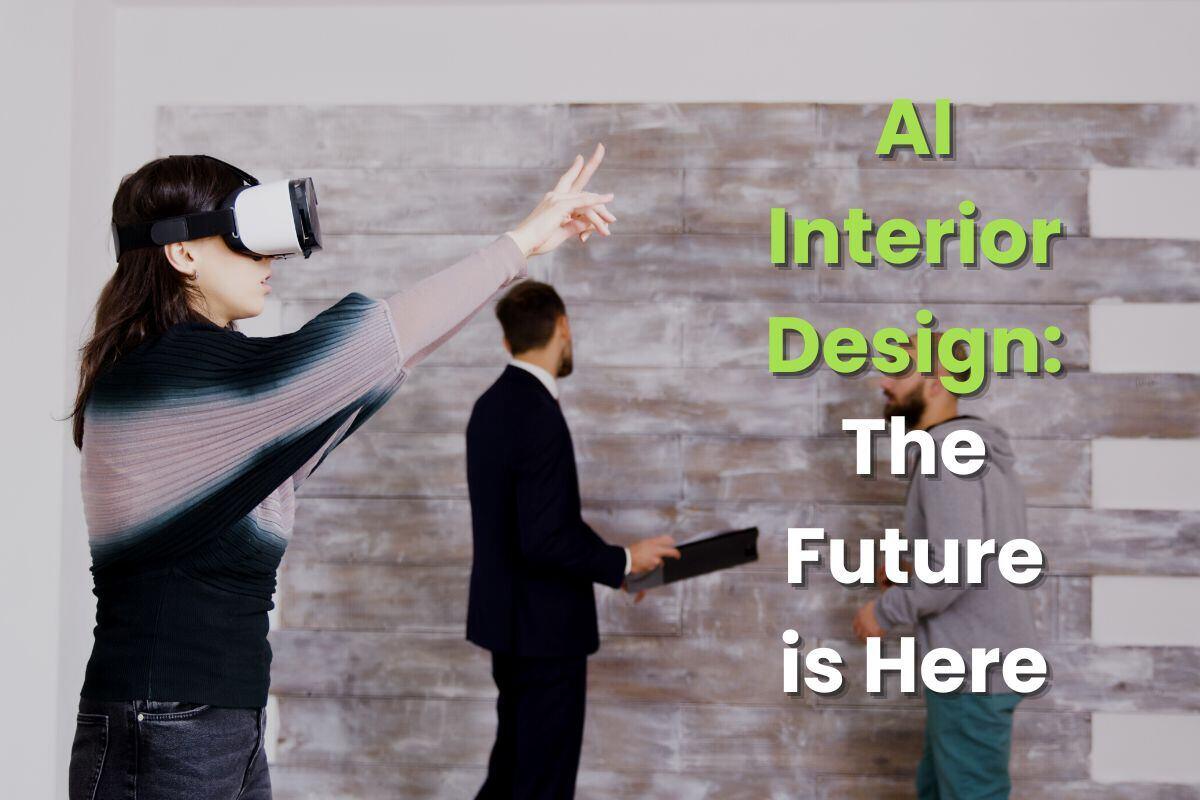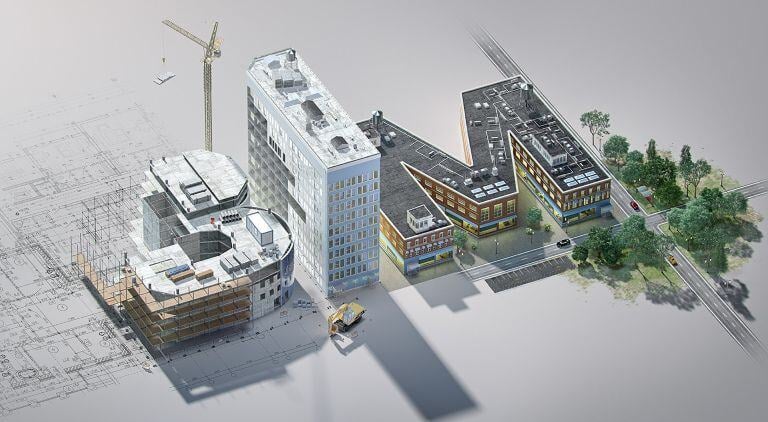
Artificial Intelligence (AI) is revolutionising the way interior spaces are designed, offering cutting-edge tools and techniques that enhance both creativity and functionality. From AI-generated interior design solutions that create personalised layouts to advanced tools that predict design trends, the role of AI in this industry is transformative. By automating repetitive tasks and analysing data for optimised space planning, AI for interior design empowers designers to focus on innovation.
However, along with its many benefits, AI introduces challenges such as over-reliance on algorithms and maintaining the human touch. This blog explores how AI is shaping the future of interior design, balancing opportunities with limitations, and setting trends for a smarter, more efficient design process.
Perks of AI in Interior Design
AI brings a transformative approach to interior design, streamlining processes and elevating creativity. Let’s explore some of the top advantages that make it a valuable tool for both professionals and clients.
1. Boosting Efficiency and Speed
AI revolutionises the design process by automating laborious tasks such as creating layouts, choosing materials, and estimating costs. These capabilities allow designers to handle more projects in less time without compromising quality. For example, AI tools for interior design use algorithms to instantly generate multiple design options, enabling faster decision-making. This improved efficiency not only saves time but also enhances productivity across all stages of the design process.
2. Broadening Design Exploration
With AI, the scope for creative experimentation becomes nearly limitless. Designers can simulate numerous variations of a single concept, quickly identifying the most innovative and practical solutions. AI’s ability to analyse vast datasets helps uncover design trends and patterns, making it easier to innovate without fear of trial-and-error setbacks. By leveraging AI, professionals can push creative boundaries while ensuring that designs remain functional and relevant.
3. Personalised Design Solutions
AI platforms analyse data such as space dimensions, user preferences, and lifestyle patterns to create personalised design suggestions. For instance, a homeowner with limited space but a modern aesthetic can receive custom design layouts that optimise storage while maintaining a sleek look. This personalisation ensures that every project feels unique and fully aligned with the client’s requirements, fostering greater client satisfaction and trust.
4. Faster Project Turnaround
AI automates repetitive and time-intensive tasks, such as generating layouts, selecting materials, and estimating costs. An AI tool for interior design frees up designers to focus on innovative and creative aspects of the project. This results in faster delivery without compromising quality, allowing designers to handle multiple projects simultaneously while maintaining client satisfaction.
5. Making Design Accessible and Affordable
Historically, professional interior design services were often perceived as a luxury. AI-powered platforms, however, bridge this gap by making high-quality designs available at a fraction of traditional costs. Whether you’re an aspiring interior designer or someone redecorating a living space, AI offers intuitive tools that cater to different skill levels and budgets. With pre-designed templates and cost-saving suggestions, it ensures accessibility without compromising on style.
Also Read: 15 Best Interior Designing Course in India 2025

Challenges of AI in Interior Design
While artificial intelligence for interior design offers numerous advantages, it is not without its challenges. Despite the innovation and efficiency brought by AI interior design tools, there are certain limitations that designers and businesses must navigate.
1. Dependency on Quality Data
The effectiveness of artificial intelligence for interior design hinges on the quality and volume of data it processes. Inadequate or biased datasets can lead to inaccurate recommendations and uninspiring designs. This dependency highlights the need for continuous data refinement and updates to ensure reliable outputs.
2. Limited Creativity
AI tools, though efficient, lack the human touch when it comes to creativity. They rely on pre-existing data and algorithms, which can result in repetitive or generic design solutions. This limitation makes it challenging for AI tools to fully capture the uniqueness and emotional depth that a human designer can bring to a project.
3. Customisation Challenges
While AI can deliver tailored results, it sometimes struggles with complex or highly specific requirements. Its algorithmic nature may lack the flexibility needed to handle intricate client demands, requiring manual refinements to bridge the gap.
4. High Initial Costs
Adopting AI tools for interior designing often involves significant initial investments in software, training, and infrastructure. For small businesses and independent designers, these costs can be prohibitive, making it challenging to integrate AI into their workflows despite its long-term benefits.
5. Ethical and Privacy Concerns
AI-driven design tools often rely on personal data to generate customised solutions, raising concerns about data privacy and ethical use. Designers must ensure that data collection practices comply with regulations and respect client confidentiality.
Also Read: Top Interior Design Courses in Banglore 2025

Future Trends of AI in Interior Design in the Next Five Years
The next five years are poised to witness a transformative evolution in AI-driven interior design, merging creativity with technology to redefine spaces. With advances in artificial intelligence and its growing integration into design processes, the future holds significant potential to revolutionise the way designers work and clients experience personalised solutions. Here are the emerging trends expected to shape the industry.
1. Sustainable Design Solutions
Sustainability will take centre stage as AI tools evolve to suggest eco-friendly materials, energy-efficient layouts, and waste-minimising strategies. With a focus on green technology, AI will empower designers to create sustainable spaces without compromising aesthetics or functionality.
2. Collaborative AI Design Platforms
AI platforms will enhance collaboration between designers, architects, and clients by offering real-time updates, feedback, and design modifications. These tools will foster efficient teamwork and reduce project timelines, especially for complex or large-scale projects.
3. Hyper-Personalised Interior Solutions
AI will move beyond general design templates to deliver highly customised solutions that align with individual lifestyles, preferences, and cultural influences. By analysing user data and behaviour patterns, AI tools will craft designs that are not only functional but deeply personalised.
4. AI-Enhanced Material Selection
Future AI interior design tools will focus on material optimisation by analysing costs, durability, and environmental impact. These insights will empower designers to make informed choices, blending functionality and aesthetics while staying budget-conscious.
5. Smart Home Integration
The next phase of AI for interior design will seamlessly integrate smart technologies into interior layouts. From AI-driven lighting systems to intelligent furniture arrangements, the emphasis will be on creating tech-savvy, interconnected living spaces that adapt to users’ needs.
6. Enhanced Virtual Reality (VR) Integration
The combination of AI and VR will enable clients to immerse themselves in realistic, interactive design mock-ups before implementation. This trend will reduce decision-making uncertainties and allow clients to experience their future spaces in real time, making adjustments with ease.
In Conclusion
AI is reshaping the interior design industry, bridging the gap between creativity and technology. Its ability to deliver personalised solutions, optimise workflows, and integrate sustainable practices is redefining how spaces are imagined and realised. However, challenges such as the need for human oversight and data privacy remain crucial considerations.
For professionals keen to stay ahead, the Advanced Interior Design with AI, which is a Professional Certification Program by Novatr offers an exceptional opportunity. This course teaches designers the practical skills in AI integration, enabling them to leverage tools for enhanced creativity and efficiency. It covers AI-based rendering, sustainable design applications, and automation techniques.
Visit Novatr's Resource Page for the latest updates and insights and apply for the course today!
Frequently Asked Questions
1. How does AI improve creativity in interior design?
AI tools empower designers to think beyond traditional boundaries by offering an extensive range of simulations and suggestions. These tools analyse data and create unique combinations of materials, colours, and styles that may not be immediately obvious to a human. Additionally, AI-driven platforms provide inspiration by showcasing global trends and experimental designs, enabling designers to break away from conventional methods.
2. What are the limitations of AI in interior design?
AI has notable limitations in interior design. It lacks the emotional depth and cultural sensitivity required to create truly meaningful spaces that resonate with individual users. While AI can generate designs based on data, it cannot fully grasp the storytelling and experiential aspects of design that humans naturally bring.
3. How does AI enhance collaboration between designers and clients?
AI tools significantly improve collaboration by bridging the gap between designers and clients through clearer communication and shared visualisation tools. For instance, AI can generate lifelike 3D models or augmented reality (AR) simulations that allow clients to walk through a virtual representation of their proposed spaces. These visual aids help clients better understand and articulate their preferences, ensuring alignment with the designer's vision.
4. What skills do designers need to work with AI in interior design?
Designers need a blend of technical, creative, and analytical skills to work effectively with AI in interior design. Familiarity with AI-powered tools and platforms is crucial, as it allows designers to maximise the technology’s potential. Understanding how to interpret AI-generated data, such as space optimisation suggestions or material recommendations, is equally important.
Was this content helpful to you








